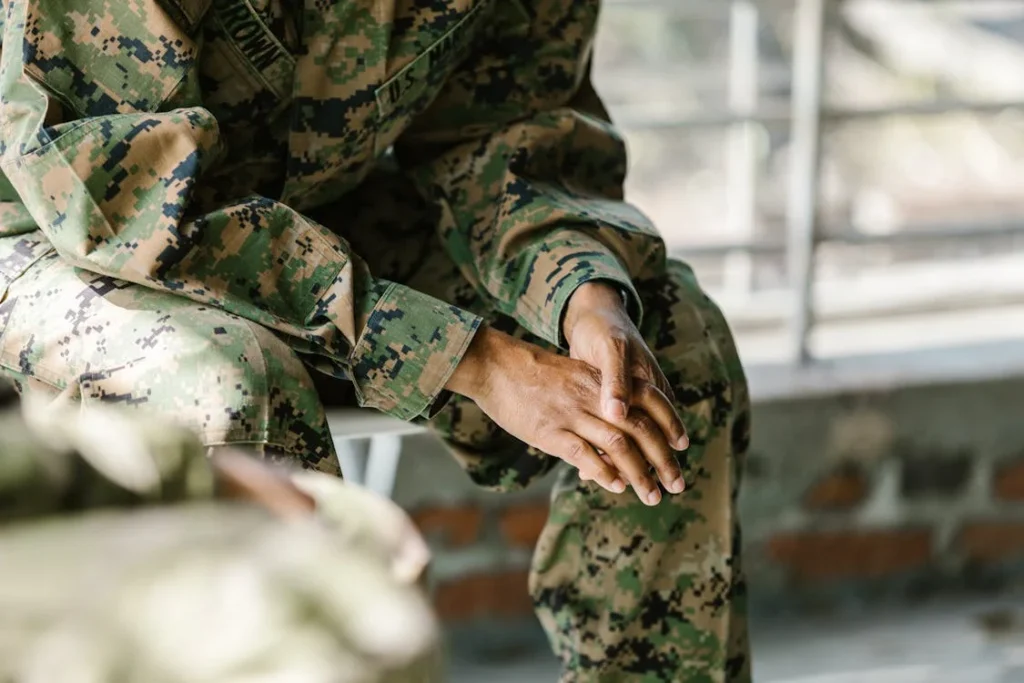Combat leaves its mark not just on the battlefield, but on the body and mind of those who serve. For many soldiers, limb loss is one of the most life-altering outcomes of war. In an instant, a blast or a bullet can change how a person moves, lives, and sees themselves. But thanks to rapid advancements in prosthetic technology, military veterans are now rebuilding their lives in ways that were once unimaginable.
In the past, prosthetics were basic. They provided support, not precision. They helped people stand, but not perform. But that has changed—and continues to change.
Today, military-grade prosthetics are built to meet extreme demands. They are designed for strength, endurance, agility, and rapid response. More than that, they are being tailored to each individual’s lifestyle, work, and future goals. From smart limbs that adapt in real time, to rugged, field-tested components, these new-age devices are reshaping the way injured veterans return to life after trauma.
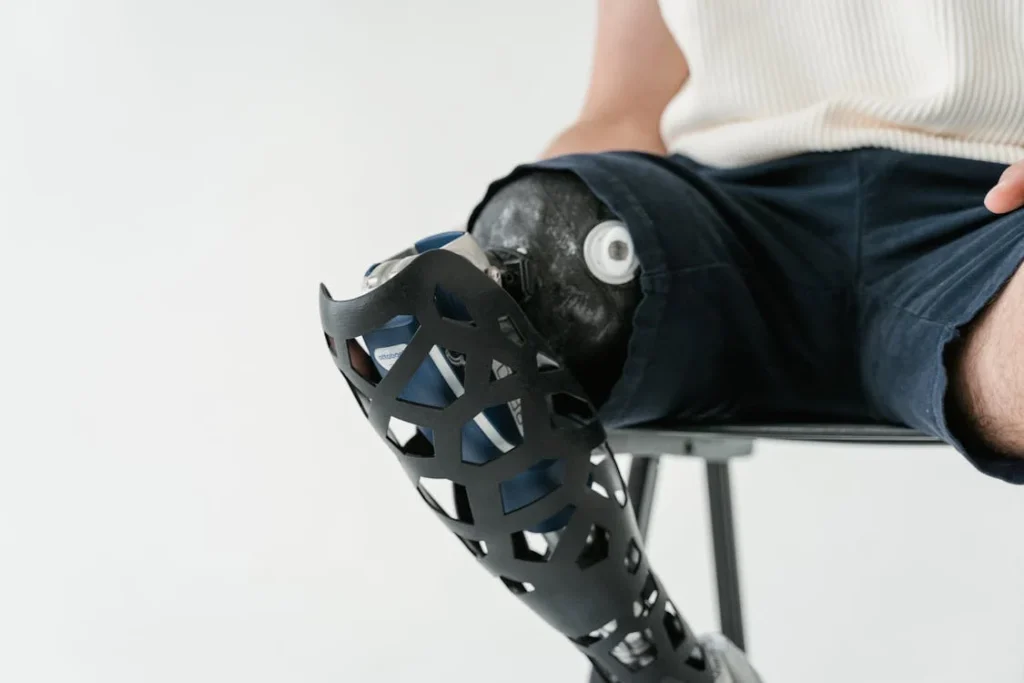
Where We Are Now: The Current State of Military-Grade Prosthetics
Built for More Than Just Support
Standard prosthetic limbs are made for basic daily use—walking short distances, handling light objects, performing everyday movements. They’re designed for comfort and general function.
But military prosthetics serve a different purpose. They’re engineered to handle pressure, perform under physical stress, and work in unpredictable environments.
Soldiers who return with limb loss don’t just want to stand again. They want to run, climb, train, and sometimes even return to active duty.
Military-grade prosthetics are built with that mindset. They focus on stability, precision, strength, and durability. The goal is to allow the body to keep moving—even when part of it is missing.
These prosthetics are made using high-performance materials like carbon fiber, titanium alloys, and reinforced polymers. That means they can take the impact of running, jumping, and carrying weight, without breaking down quickly.
They also offer better balance and alignment, especially in uneven terrain—something that matters not just in combat but also in everyday situations like stairs, slopes, and rough roads.
Faster Recovery Through Advanced Fit and Feedback
Another thing that separates military-grade prosthetics from regular ones is how they connect with the body. Fit matters more than anything else. A loose socket or a poor alignment can lead to pain, swelling, and even serious injuries over time.
Today, advanced socket designs use digital scans and pressure mapping to shape a custom fit for each user.
Some use heat-sensitive or gel liners that adjust to swelling and temperature changes, which is especially important for veterans who are rebuilding strength or working through intensive rehab routines.
Beyond fit, modern military prosthetics are now focusing more on feedback. In older designs, users had to guess where their prosthetic was landing or how much force it was using.
But now, many systems include sensors that provide better proprioception—or body awareness—through vibrations or electronic cues.
This feedback gives the user more control and confidence. It allows them to react faster, adjust their stride, and avoid falls. For someone adjusting to life after combat trauma, these small improvements make a huge difference.
Smarter Knees and Hands for Smarter Movement
Knee and hand joints are some of the most complex areas to replicate in a prosthetic. And in military cases, these joints often need to do more than just bend. They need to stabilize quickly, respond to fast movements, and handle uneven impact.
Microprocessor knees—often used in military prosthetics—are computer-controlled systems that constantly monitor how the user walks.
They adjust the resistance in real time based on speed, angle, and pressure. This means smoother, safer walking and better shock absorption when running or going downhill.
Some of these knees also include standing functions, which lock the joint while stationary. This provides more balance during tasks like lifting, reaching, or standing at attention.
On the upper limb side, advanced prosthetic hands now include multi-grip patterns. These allow veterans to hold tools, grip weapons, cook, type, or even shake hands—all using muscle signals from the remaining limb.
Some bionic hands now offer individual finger control, giving a more natural feel for everyday use.
These devices are not just practical—they help rebuild dignity. They give back fine motor control, and with it, a sense of independence.
Durability and Weather Resistance
Combat zones and field conditions are harsh—extreme heat, dust, mud, water, and sudden impacts. A military-grade prosthetic has to survive all of it. That’s why durability is a top priority in design.
Many of today’s prosthetics for veterans come with sealed joints, water-resistant coatings, and impact-tested materials. They are made to withstand long hours of use, unpredictable weather, and occasional abuse without failing.
This durability also helps with peace of mind. Veterans can move freely without worrying about breaking or damaging their device while doing regular tasks—whether it’s hiking, driving, or playing with their children.
Focus on Active Lifestyle, Not Just Basic Mobility
One of the most important changes in modern military prosthetics is the shift in goal—from restoration to optimization. In the past, the aim was to help someone walk again. Now, the aim is to help them live fully, move freely, and stay active without limits.
Many of today’s veterans go on to run marathons, compete in adaptive sports, or rejoin the workforce in physically demanding roles. The prosthetic is not just a replacement. It becomes a tool for movement, purpose, and confidence.
With each new development, these tools are becoming lighter, smarter, and more human-friendly. The gap between artificial and natural movement is shrinking—and so is the gap between injury and independence.
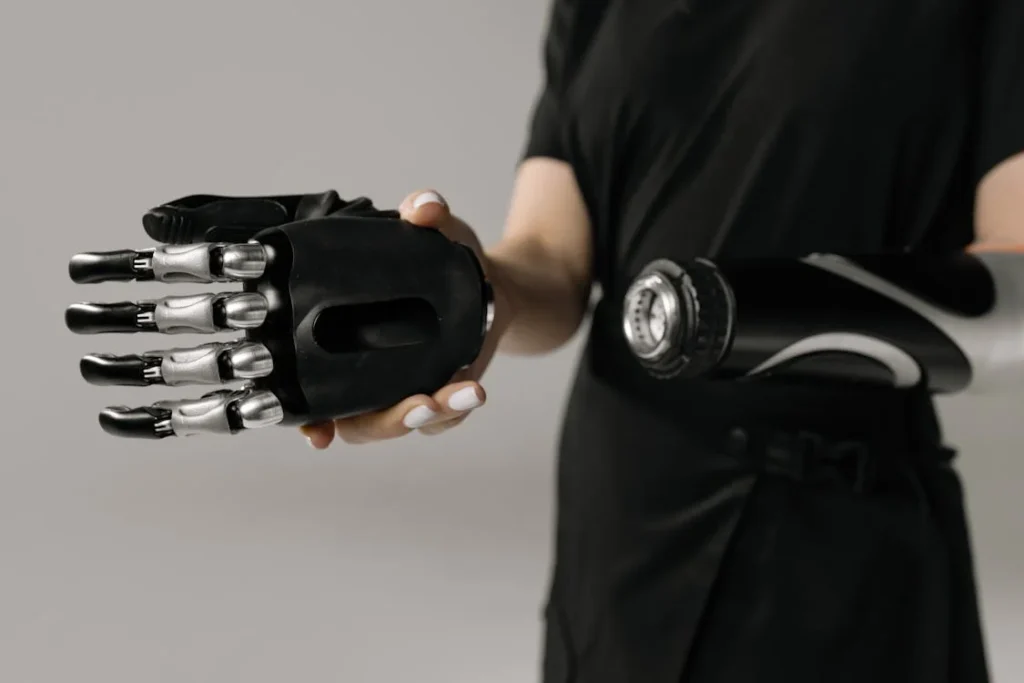
What’s Coming: The Future of Military-Grade Prosthetics
From Artificial Limbs to Intelligent Extensions
Prosthetic limbs are no longer just mechanical add-ons—they’re becoming intelligent extensions of the human body. The future of military-grade prosthetics lies in smart systems that think, adapt, and respond just like a natural limb would.
Emerging designs are now integrating artificial intelligence (AI) that allows the prosthetic to learn from the user’s movement patterns.
These systems analyze how someone walks, how their speed changes, how their weight shifts, and then adjust in real time. The goal is not just to react—but to predict what movement is coming next.
Imagine a knee that senses you’re about to climb stairs and automatically shifts to stair mode. Or a hand that remembers your preferred grip when holding a pen or tightening a screw.
These are not distant dreams. They are prototypes already being tested—and in some cases, already in use.
This intelligent adaptability is especially valuable for combat veterans, who may have unpredictable terrain, uneven surfaces, or sudden body shifts due to balance changes. By giving the prosthetic the ability to “read” the body, movement becomes smoother, more natural, and safer.
Direct Neural Integration: Mind-Controlled Prosthetics
One of the most exciting developments in military prosthetics is direct neural control—often referred to as “mind-controlled limbs.”
In this system, electrodes are implanted into the residual muscles or directly onto the nerves of the user’s limb. These electrodes pick up the electrical signals sent by the brain.
With training and calibration, those signals can be used to move the prosthetic in real time—just by thinking.
This means a soldier could control a prosthetic arm by simply imagining the movement—no switches, no extra effort. The limb responds like a natural part of the body, making it faster and more intuitive to use.
This level of control is not yet widespread due to the complexity of the surgeries involved and the need for advanced software. But progress is happening fast.
Clinical trials across the U.S., Europe, and parts of Asia are showing strong results. India, too, is beginning to explore possibilities through research labs and university partnerships.
For military users, this technology can be life-changing. Whether it’s for handling equipment, managing weapons systems, or simply returning to daily activities with more confidence, mind-controlled prosthetics represent a major leap in what’s possible.
Sensory Feedback: Bringing Back the Sense of Touch
Being able to move a limb is powerful. But being able to feel again—that’s something entirely different.
New prosthetic designs are now working on sensory feedback systems that restore a sense of pressure, temperature, and even texture.
These systems use sensors in the fingertips or feet of the prosthetic to gather information. That data is then translated into gentle vibrations or pulses, sent to specific areas on the user’s skin—or even to the nerves themselves.
This means when a veteran grabs a cup, they can feel how tightly they’re holding it. When they step on gravel, they can sense the difference in texture.
These small sensations make movement safer and more intuitive. They also help prevent injury, such as grabbing something too hot or stepping on a sharp object without noticing.
This kind of feedback is especially useful in high-stress environments where awareness is everything. For military users, it brings them closer to feeling whole again—restoring not just function, but a sense of connection.
Modular, Mission-Ready Designs
Another trend in military prosthetics is modularity—the ability to switch components based on the task at hand. A soldier may not need the same type of foot or hand for daily life as they do for physical training or outdoor activities.
New designs allow users to swap between sockets, foot types, or hand tools without needing an entire new system.
Some prosthetics are now being built with modular mounts—allowing for attachments like tools, handles, or grips that can be changed based on activity. Others have shock-absorbing or rotating ankle joints that can be adjusted for hiking, running, or navigating stairs.
This kind of flexibility means a veteran doesn’t have to compromise. They can customize their prosthetic setup based on their lifestyle, job, or hobbies.
Integration with Smart Devices and Apps
Smartphone apps are playing a growing role in prosthetic care. Many modern systems now connect wirelessly to an app where users can track performance, adjust settings, or even troubleshoot problems in real time.
Imagine adjusting your knee resistance for running versus walking using a slider on your phone. Or checking how many steps you took during a workout. Some systems even offer remote updates, meaning improvements can be added without needing a full device replacement.
These tools help veterans stay in control—not just physically, but technically. And with more health records and rehab programs moving online, this kind of integration is likely to become the standard.
India’s Role in the Innovation Ecosystem
While much of this technology began in the West, India is now stepping into the global conversation. Companies like Robobionics, along with leading medical institutes, are developing smarter, more affordable prosthetic solutions for Indian veterans.
Our teams are working to bring down costs without compromising performance. We are also focused on ruggedness, local repair support, and ease of use in diverse conditions—from cities to remote border regions.
With the Make in India movement gaining ground, we believe homegrown innovation can meet global quality while staying sensitive to local needs.
The future of military-grade prosthetics in India is not just about importing devices. It’s about creating them—right here, with and for our heroes.
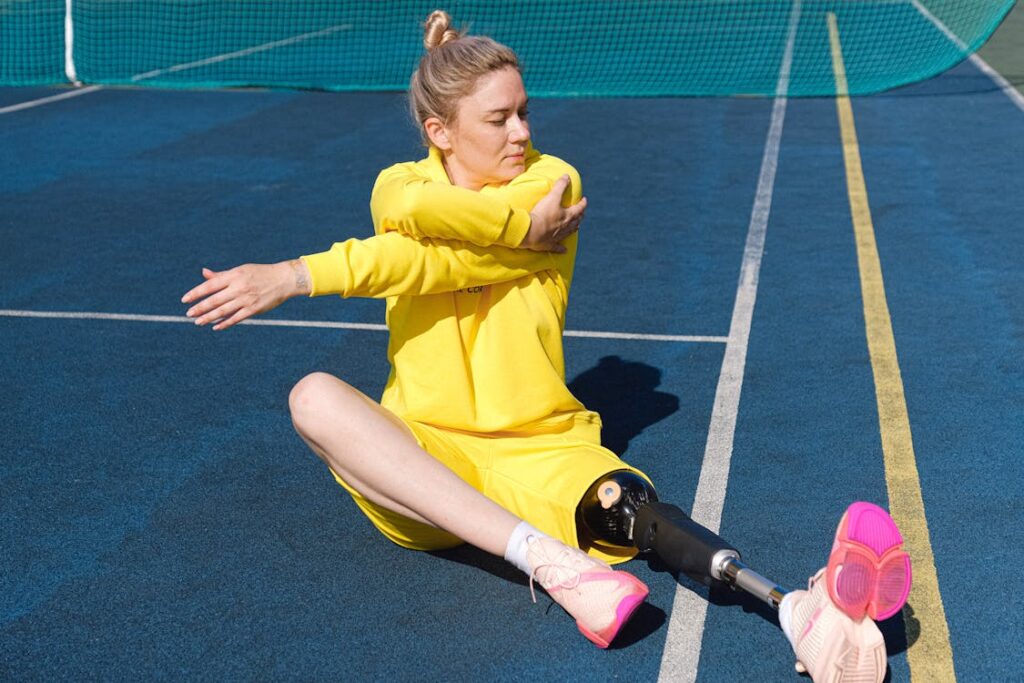
The Human Side of Recovery: Adapting to Advanced Prosthetics
More Than a Device, It’s a Whole New Way of Living
Getting fitted with a high-tech prosthetic isn’t the end of the journey—it’s the beginning of a new one. Advanced prosthetics, especially military-grade ones, come with powerful features, but they also require a lot of learning.
Just like a new recruit in training, the user must understand their equipment, trust it, and make it part of their daily life.
This adjustment takes time. It’s not just about walking again or gripping a tool. It’s about rewiring the brain to interact with a limb that didn’t exist before. The learning curve can be steep, especially for veterans who are used to being physically capable and in control.
That’s why rehabilitation and training are just as important as the prosthetic itself. And in many ways, they’re the key to making this technology truly life-changing.
The Role of Physical and Occupational Therapy
When a military amputee receives a new prosthetic, the first step is always physical therapy. This is where they relearn how to balance, shift weight, climb stairs, or pick up objects.
It might start with simple exercises—stretching, standing, walking in a straight line—but it quickly moves to real-world scenarios.
In the case of upper-limb prosthetics, occupational therapy takes center stage. Veterans learn how to write, type, hold a toothbrush, or use kitchen tools.
For those with myoelectric or multi-grip bionic hands, therapy includes practicing control over grip patterns, switching between modes, and improving coordination.
This process can take weeks or months, depending on the individual’s injury, the complexity of the device, and how much nerve or muscle training is needed. But it is worth every second, because this is how independence is rebuilt—not with shortcuts, but with solid foundations.
Rehabilitation centers working with military-grade prosthetics are now combining virtual training and gamified rehab modules to make the process more interactive.
These tools help keep users motivated while improving muscle control, coordination, and cognitive response to feedback from the limb.
Psychological Recovery: The Missing Link in Most Journeys
One of the hardest parts of prosthetic adaptation isn’t the physical work—it’s the emotional shift. Limb loss, especially due to combat trauma, often comes with deep psychological scars. Pain, PTSD, survivor’s guilt, or simply the loss of identity as a soldier—all of these weigh heavily.
A prosthetic limb might restore motion, but it can’t erase the mental struggle. That’s where mental health support comes in. Counseling, peer support, and structured group therapy have become crucial parts of military rehab programs around the world.
It’s not unusual for veterans to go through a range of emotions: frustration, embarrassment, sadness, anger, and finally, acceptance. Some days, they might feel like they’re making progress. On others, they may want to take the prosthetic off and never look at it again.
This is normal. It’s part of the process. The key is not to go through it alone.
Psychological support helps veterans rebuild their relationship with their body and their self-image. It also helps with real fears: What if I fall? What if people stare? What if I can’t do what I used to?
Through consistent therapy and encouragement, these fears don’t vanish—but they shrink. And in their place, confidence grows.
Training for Real Life: Not Just Walking, But Living
Military prosthetic training doesn’t stop at walking on a flat surface. It extends to every part of life. Veterans learn how to run again, how to handle uneven terrain, how to move in crowds, and how to deal with common prosthetic issues like overheating, slipping, or fatigue.
Many programs now simulate daily scenarios: boarding a bus, lifting groceries, opening a gate, even navigating through sand or rocky ground. The goal is not just mobility—it’s mobility with freedom.
For upper-limb users, training may involve tool use, lifting weights, typing on a keyboard, or even holding a child safely. These are the moments that matter. These are the milestones that rebuild identity—not as someone who was injured, but as someone who adapted.
The prosthetic is just the tool. The user is the one making it powerful.
The Importance of Peer Mentors and Role Models
One of the strongest sources of motivation during recovery is seeing someone else who’s already made it. Veteran peer mentors—people who have gone through the process, faced the hard days, and still found joy—are a major force in military prosthetic rehab.
Their presence says what no brochure or doctor can: You will be okay. You will find your way.
Mentorship also allows space for real conversations. About the bad days. About intimacy, parenting, going back to work, dealing with stares, and handling failure. These conversations aren’t always easy, but they are necessary.
And they make the process feel less like a medical treatment, and more like a journey toward wholeness.
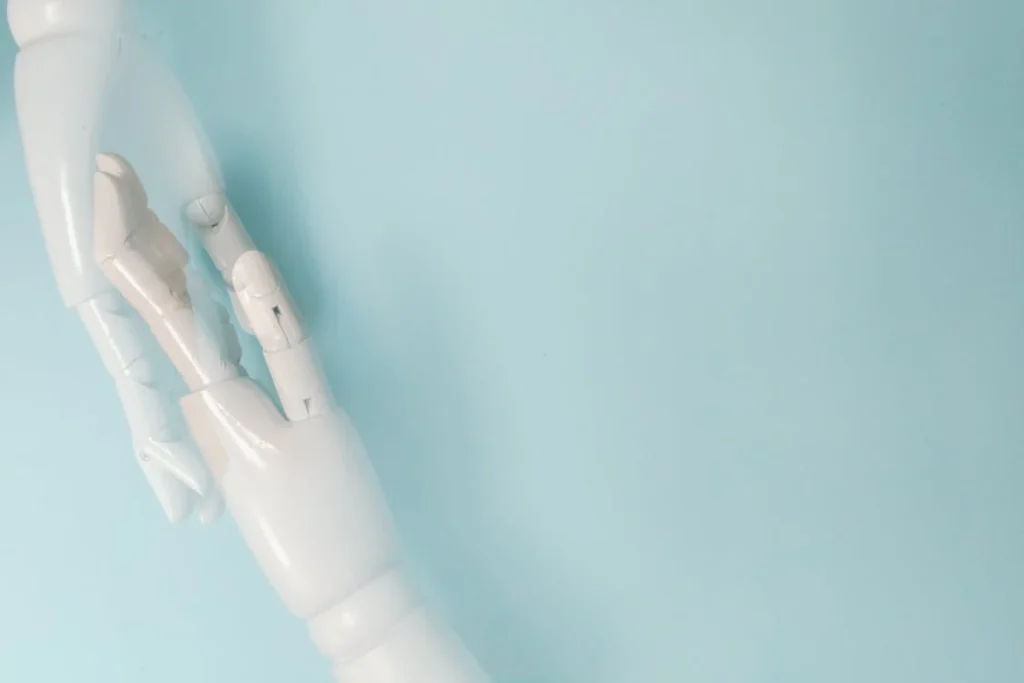
Support Beyond the Battlefield: Policy, Access, and Long-Term Care
The Role of Government in Veteran Prosthetic Support
For soldiers returning home with limb loss, the journey doesn’t end with treatment. It extends into how they live the rest of their lives—and that requires long-term support.
In many countries, including India, this support is evolving to better reflect the needs of modern veterans. And at the center of this shift is access to advanced prosthetics.
The Indian government provides financial and medical assistance to disabled veterans through programs managed by the Ministry of Defence and the Directorate General Resettlement (DGR). These include free prosthetic fittings, rehabilitation services, and follow-up care through armed forces medical facilities.
In recent years, additional emphasis has been placed on ensuring veterans not only get a prosthetic—but get one that matches their lifestyle, fitness goals, and future plans.
However, for many veterans, especially those in remote or rural areas, delays in access or lack of awareness can create gaps. That’s where outreach programs and veteran support organizations step in, helping bridge the gap between policy and people.
Their work ensures that benefits don’t just exist on paper but are delivered to the ground where they matter most.
Evolving Standards and Military-Approved Prosthetics
Military hospitals and rehabilitation centers often follow specific standards when recommending prosthetic solutions. Devices must be rugged, field-tested, and capable of handling the unique demands of combat injuries. This means not all civilian prosthetics qualify.
That’s why some companies—like Robobionics and others focused on innovation in India—work directly with defense medical teams to co-develop prosthetics that meet these standards.
This includes designing devices that are lightweight yet strong, easy to maintain, compatible with Indian terrain, and built for long-term reliability.
The Indian Armed Forces are increasingly open to these partnerships, especially under the Make in India initiative, which encourages local solutions for local needs.
This helps reduce dependency on expensive imported devices and makes it easier to provide timely support to soldiers who need immediate prosthetic care.
There is also growing interest in centralizing the evaluation of new technologies, so that cutting-edge prosthetics—like myoelectric limbs and AI-integrated systems—can be approved faster and integrated into military hospitals more smoothly.
Financial Support, Disability Pensions, and Accessibility
Affording a prosthetic, especially an advanced one, can be overwhelming for a retired soldier without stable income. Fortunately, financial support schemes are improving.
Disability pensions, ex-servicemen welfare grants, and coverage under the Ex-Servicemen Contributory Health Scheme (ECHS) provide partial or full reimbursement for prosthetic devices.
Some NGOs and government-funded trusts also step in when veterans fall outside formal coverage. The Central Government Health Scheme (CGHS) and the Indian Red Cross Society occasionally offer additional support, depending on region and individual needs.
What remains a challenge, though, is the process. Paperwork, medical boards, and approvals can sometimes delay treatment. That’s why simplifying the claim process—especially for prosthetic upgrades and repairs—is a growing area of policy discussion.
More importantly, veterans need not just the device, but access to training centers, therapists, and mental health professionals. The full ecosystem must be available—because a prosthetic without proper rehab is just hardware.
The Push for National-Level Rehabilitation Frameworks
One of the big shifts happening now is the call for national prosthetic rehabilitation frameworks. These frameworks aim to create a consistent standard of care across the country—whether the veteran is in Delhi, Pune, or a small village in Uttarakhand.
This means setting timelines for fitting, offering structured rehab schedules, and ensuring veterans have a clear pathway from injury to reintegration. It also includes regular upgrades for those using older prosthetics—so that no one is left behind as technology advances.
Several states are now piloting digital tracking of prosthetic use, repair schedules, and rehab progress. This helps care providers and prosthetists understand where improvements are needed.
In the future, these records could connect directly to defense health networks, making support more seamless and proactive.
India’s progress in this space may not be as fast as in some Western nations—but the momentum is real. And it is driven not just by policy, but by the voices of veterans who continue to ask a powerful question: “We served our country. Will our country now stand with us?”
The answer, slowly but surely, is becoming yes.
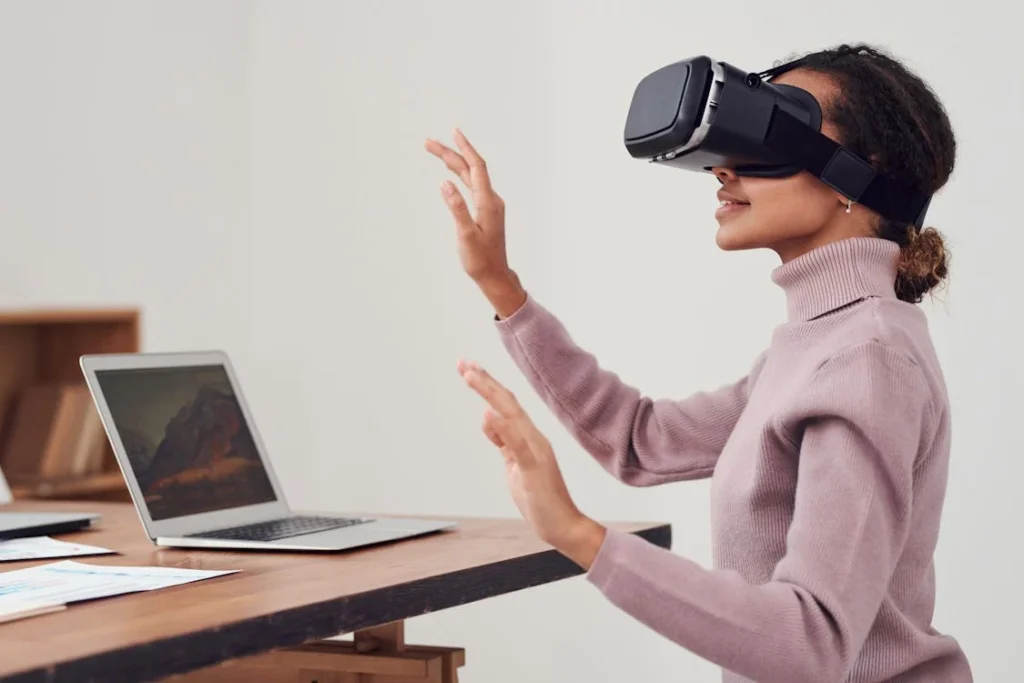
Virtual Reality and Simulation Training: A New Era in Prosthetic Rehab
Why Real-Life Practice Isn’t Always Enough
Learning to use a military-grade prosthetic takes time, but more importantly—it takes safe practice. Real-world environments are unpredictable.
A veteran walking with a new prosthetic might stumble on uneven ground, misjudge a step, or struggle with depth perception. For someone relearning how to move, fall, and regain balance, the risk of injury is real.
That’s where simulation training and virtual reality (VR) come in. They allow veterans to train their mind and body without the danger of getting hurt. In a controlled, repeatable, and immersive space, the user can rehearse daily scenarios and complex movements that mimic real life.
VR doesn’t replace physical therapy—it enhances it. It adds an extra layer of depth by stimulating the brain’s response to motion, coordination, and spatial awareness. And it helps veterans build confidence before they face high-pressure situations in the real world.
What VR-Based Prosthetic Training Looks Like
In a typical VR rehab setup, a user wears a headset that transports them into a digital environment—a virtual street, home, training ground, or combat scenario.
Their prosthetic is synced with sensors or connected through motion-capture technology. As they move, the system tracks their posture, stride, joint angles, and timing.
If they’re using a bionic hand, the system may prompt them to grip, twist, or release virtual objects. If they’re walking on a prosthetic leg, the software might simulate stairs, ramps, or uneven ground.
Everything is guided by a digital therapist or AI module that gives real-time feedback.
There’s no penalty for mistakes. No injuries if they fall. Just the chance to try again, as many times as needed. This removes fear and hesitation—two major barriers to recovery.
For many combat veterans, this freedom to practice without consequence is a mental game-changer.
Rebuilding Muscle Memory with Immersive Training
One of the greatest strengths of VR is how it supports neuroplasticity—the brain’s ability to form new pathways after trauma. After limb loss, the brain still sends signals to the missing limb.
VR, when used alongside myoelectric prosthetics, helps retrain those signals to control the new limb.
This rewiring process is faster and smoother in immersive environments, where actions feel natural and engaging. Instead of repeating dull rehab drills, veterans can walk through realistic missions, navigate obstacles, or complete gamified challenges.
These activities aren’t just more fun—they’re more effective. They improve reflexes, strengthen motor planning, and help integrate the prosthetic into the user’s natural movement flow.
Over time, this helps the brain treat the device as part of the body—not a separate machine.
The Future of Combat Simulations for Prosthetic Users
Military organizations are now exploring advanced VR programs that combine combat simulation with prosthetic training. These systems allow veterans to re-enter familiar field environments, practice tactical movement, and rebuild specific skillsets—without risking re-injury.
For example, a soldier might train to kneel and aim, change directions quickly, or move through tight spaces—all while using a prosthetic leg or hand. These simulated drills help determine how the prosthetic performs under stress and what changes may be needed.
More importantly, it allows the user to regain tactical confidence. This is vital for those planning to return to duty in advisory, logistical, or training roles where physical performance still matters.
In India, as defense healthcare modernizes, VR could play a growing role in post-trauma recovery for soldiers.
With localized virtual environments, language support, and modular programs, even district rehab centers could soon offer immersive training without needing large budgets.
Making Technology Personal, Not Just High-Tech
What makes VR powerful is not just the tech—but how personal it can become. Systems can be tailored to a veteran’s specific needs, injuries, lifestyle, and goals.
Someone recovering from a hand injury may focus on grip and coordination. Another may work on walking while carrying gear or maneuvering through crowded areas.
Progress can be tracked, visualized, and celebrated—something that helps with motivation and mental health. And over time, the training becomes less about recovery and more about readiness.
As this technology becomes more available, it has the potential to close a critical gap: giving veterans the time, space, and tools to adapt at their own pace, with fewer risks and more support.
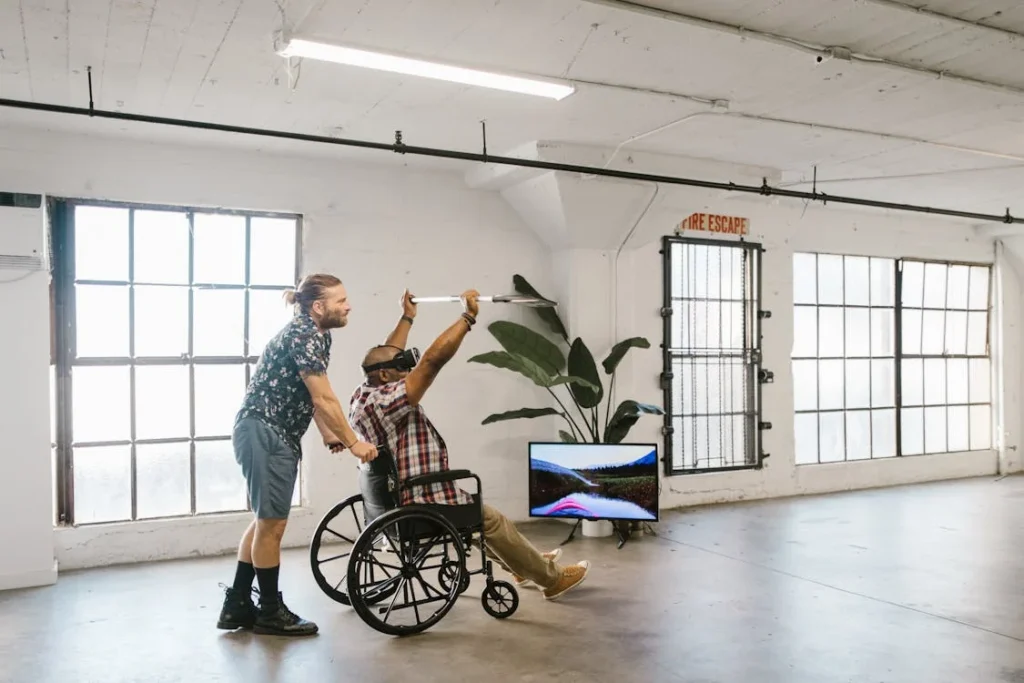
The Support System: Family and Caregivers in the Prosthetic Journey
When One Person Is Injured, the Whole Family Feels It
When a soldier returns home with a limb injury, it’s not just their life that changes. Their spouse, children, parents, and even close friends are affected.
Daily routines shift. Emotional dynamics shift. And suddenly, the person who once stood as a protector may now need support, both physical and emotional.
The transition from soldier to civilian, from patient to prosthetic user, doesn’t happen in isolation. It happens inside homes, within families, and through the presence of caregivers—people who quietly adjust their lives to help rebuild someone else’s.
In the best cases, these family members become not just supporters but partners in the recovery process.
Understanding the Prosthetic Together
Advanced military prosthetics are not simple devices. They require time, care, and daily attention. Many veterans, especially in the early months post-injury, rely on family to help them clean the residual limb, adjust the socket, manage prosthetic attachments, and watch for signs of skin irritation or infection.
When families are trained along with the user, the experience becomes smoother. They learn how to spot problems early, how to encourage daily use without adding pressure, and how to support therapy at home.
For upper-limb prosthetic users, family support is especially important in helping with fine-motor rehab—such as practice tasks, at-home exercises, and safe experimentation with grip patterns.
Some veterans feel embarrassed asking for help. But when that help is offered calmly, respectfully, and without pity, it builds trust. That emotional trust becomes a bridge to physical recovery.
Caregiver Burnout Is Real—But Can Be Managed
While support from family is essential, it can also be emotionally and physically demanding. Spouses may have to manage more household responsibilities. Parents may have to shift their roles. Children may sense the emotional weight and not know how to respond.
Over time, this can lead to caregiver fatigue. This is especially true if the caregiver feels unprepared, unsupported, or overwhelmed by the changes.
That’s why caregiver education is just as important as prosthetic training. Hospitals and clinics that offer rehab support should also offer emotional tools to the family: guidance on setting healthy boundaries, signs of burnout, and access to support groups.
Caregivers need reminders that it’s okay to take breaks. That they are allowed to have hard days. And that their wellbeing matters too. When the family is emotionally strong, the veteran’s recovery becomes more stable.
Children and Adaptation: How Young Eyes See Prosthetics
For veterans who are also parents, there’s often an added worry: How will my child see me now? Will they feel afraid? Embarrassed? Ashamed?
The truth is, children adapt faster than adults. They don’t always focus on what’s “missing.” Instead, they see what’s still there—the voice, the hugs, the presence.
Many veterans have shared that once they explained the prosthetic to their children in simple terms, the questions stopped. The device became part of family life. In some homes, children even take pride in showing their parent’s “robot hand” or high-tech leg to others.
When families talk openly about the prosthetic—not as a disability, but as a tool—it normalizes the change. This open attitude makes it easier for the veteran to feel included, respected, and whole.
A Collective Journey, Not a Solo One
Adapting to a military-grade prosthetic is a complex journey. It’s physical. It’s emotional. It’s deeply personal. But it doesn’t have to be lonely.
When families are involved with care, when they are informed and encouraged, they become a living part of the recovery system. Their support helps the user not just function—but flourish.
They make daily life smoother, setbacks easier to manage, and victories sweeter to celebrate.
And in return, veterans often rediscover their sense of purpose—not just through their own strength, but through the quiet, constant presence of the people who never left their side.
Conclusion
Military-grade prosthetics are not just about advanced technology—they’re about restoring freedom, identity, and dignity to those who’ve given everything in service. From rugged mechanical designs to intelligent, mind-controlled limbs, today’s innovations are making it possible for combat veterans to return not only to movement but to meaningful lives.
Yet, it’s not just the prosthetic that makes the difference—it’s the support around it. Recovery is shaped by rehab, by caregivers, by policy, and most importantly, by the individual’s will to adapt. Every limb fitted, every step relearned, is a quiet act of resilience.
At Robobionics, we believe in building prosthetics that serve people, not just replace parts. And we’re proud to contribute to a future where no veteran is left behind—where technology meets humanity, and healing is never out of reach.
Because for our heroes, the mission doesn’t end with injury. It simply evolves. And we’re here for every step forward.



